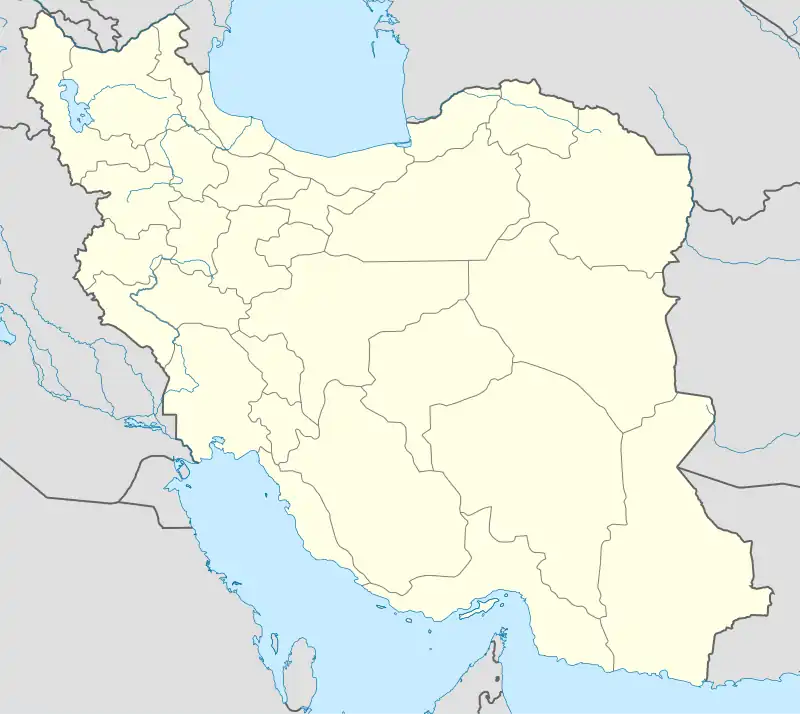Zavareh
Persian: زواره | |
|---|---|
City | |
 Zavareh | |
| Coordinates: 33°26′41″N 52°29′08″E / 33.44472°N 52.48556°E[1] | |
| Country | Iran |
| Province | Isfahan |
| County | Ardestan |
| District | Zavareh |
| Population (2016)[2] | |
| • Total | 8,320 |
| Time zone | UTC+3:30 (IRST) |
Zavareh (Persian: زواره, also Romanized as Zavāreh, Zavâre, and Zavvāreh; also known as Īstgāh-ye Zavār and Zūrāvar)[3] is a city in, and the capital of, Zavareh District of Ardestan County, Isfahan province, Iran.
At the 2006 census, its population was 7,806 in 2,197 households.[4] The following census in 2011 counted 7,814 people in 2,385 households.[5] The latest census in 2016 showed a population of 8,320 people in 2,671 households.[2]
Zavareh is located in the northeast of the province, next to the central desert area. It is known that Zavareh had a Sassanian fire temple and was an important trade center in the Seljuk period. The town is named after Zavara, the brother of Rostam, a mythical hero of Iran.
Historical sites
- Zavareh Grand Mosque: An inscription in the entrance stucco dates this Seljuk-era mosque to 1135–1136, making it the first known dated mosque constructed according to a four-portico (iwan) plan in the post-Islamic Iran.
- Pa Minar Mosque: The minaret of this mosque bears a Kufic inscription in brick, dating it to 1068–1069. This makes it the second oldest dated minaret in Iran, the oldest being at Saveh. The minaret makes part of a Seljuk mosque, which has been restored during the Il-Khanid period.
- Zavareh's Kariz Qanat: This qanat dates back to 5000 year ago, a network of underground canals that delivers water from distant resources.
References
- ↑ OpenStreetMap contributors (9 June 2023). "Zavareh, Ardestan County" (Map). OpenStreetMap. Retrieved 9 June 2023.
- 1 2 "Census of the Islamic Republic of Iran, 1395 (2016)". AMAR (in Persian). The Statistical Center of Iran. p. 10. Archived from the original (Excel) on 19 October 2020. Retrieved 19 December 2022.
- ↑ Zavareh can be found at GEOnet Names Server, at this link, by opening the Advanced Search box, entering "-3089237" in the "Unique Feature Id" form, and clicking on "Search Database".
- ↑ "Census of the Islamic Republic of Iran, 1385 (2006)". AMAR (in Persian). The Statistical Center of Iran. p. 10. Archived from the original (Excel) on 20 September 2011. Retrieved 25 September 2022.
- ↑ "Census of the Islamic Republic of Iran, 1390 (2011)" (Excel). Iran Data Portal (in Persian). The Statistical Center of Iran. p. 10. Retrieved 19 December 2022.
- Matheson, Sylvia A. (1972). Persia: An Archaeological Guide. London: Faber and Faber Limited. ISBN 0-571-09305-1
External links
This article is issued from Wikipedia. The text is licensed under Creative Commons - Attribution - Sharealike. Additional terms may apply for the media files.
